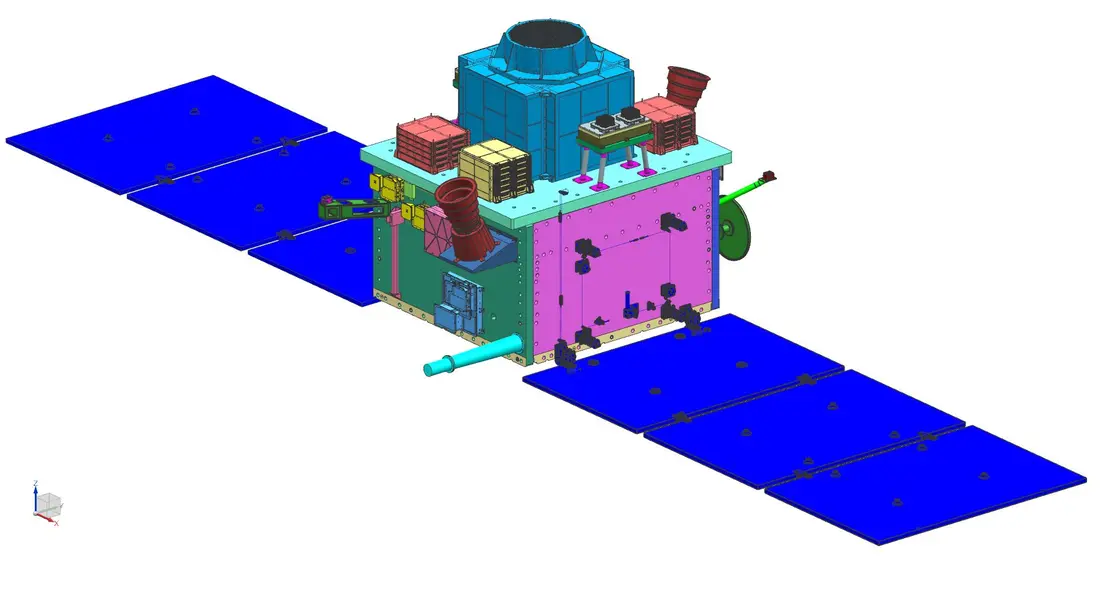Bengaluru, NFAPost: In a significant collaboration, the Indian Space Research Organisation (ISRO) has joined forces with the Raman Research Institute (RRI) in Bengaluru to develop the X-Ray Polarimeter Satellite (XPoSat). This pioneering mission aims to shed light on the intricate dynamics of bright astronomical X-ray sources under extreme conditions. With two scientific payloads on board, the satellite will be placed in a low Earth orbit to facilitate groundbreaking research in the field.
The primary payload, called POLIX (Polarimeter Instrument in X-rays), has been designed to measure the polarimetry parameters, including the degree and angle of polarization, in the medium X-ray energy range of 8-30 keV. POLIX is a collaborative effort between RRI and the U R Rao Satellite Centre (URSC) under ISRO. It comprises a collimator, a scatterer, and four X-ray proportional counter detectors that surround the scatterer. By utilizing anisotropic Thomson scattering of polarized X-rays, the scatterer, made of low atomic mass material, enables precise measurements. POLIX will focus on observing approximately 40 bright astronomical sources of different categories during the five-year lifespan of the XPoSat mission, making it the first dedicated payload for medium X-ray energy band polarimetry measurements.
The second payload, XSPECT (X-ray Spectroscopy and Timing), will provide valuable spectroscopic information in the energy range of 0.8-15 keV. XSPECT boasts fast timing capabilities and excellent spectroscopic resolution for soft X-rays. Leveraging its long-duration observations, which align with the requirements of POLIX for measuring X-ray polarization, XSPECT will enable long-term monitoring of spectral state changes in continuum emission. It will also capture variations in line flux and profile, alongside simultaneous temporal monitoring of soft X-ray emission. XSPECT’s array of Swept Charge Devices (SCDs) will provide an effective area exceeding 30 cm² at 6 keV, with an impressive energy resolution of under 200 eV at 6 keV. Passive collimators will be employed to narrow XSPECT’s field of view, reducing background noise. This payload will investigate various sources, including X-ray pulsars, blackhole binaries, low-magnetic field neutron stars, active galactic nuclei, and magnetars.
XPoSat is a significant milestone for India, representing the nation’s first dedicated polarimetry mission. By studying the degree and angle of polarization alongside spectroscopic measurements, researchers hope to gain a deeper understanding of the complex physical processes driving emission mechanisms in astronomical sources such as black holes, neutron stars, active galactic nuclei, and pulsar wind nebulae. These measurements have the potential to elucidate the nature of emissions from these sources and contribute to resolving uncertainties in existing theoretical models. The XPoSat mission holds great promise for the Indian scientific community in their pursuit of unravelling the mysteries of the universe.
ISRO Chairman S Somanath recently urged Indian scientific institutions to harness the emerging data from space missions, including XPoSat, and encourage talented students to effectively utilize this wealth of information. The XPoSat mission, scheduled for launch later this year, signifies India’s dedication to advancing space research and contributing to the global understanding of astronomical phenomena.
India’s XPoSat mission stands alongside NASA’s Imaging X-ray Polarimetry Explorer (IXPE) as one of only two major polarimetry missions worldwide. X-ray observations in space provide valuable insights into the universe, with their higher energy and shorter wavelengths. X-rays, ranging from 0.03 to 3 nanometers in wavelength, can reveal crucial information about objects’ physical temperatures and the peak emission wavelengths associated with them.
Polarimetry, the study of the angle of rotation of the plane of polarized light, plays a pivotal role in enhancing our understanding of the behaviour of X-rays passing through certain transparent materials. By utilizing this technique, researchers can unravel the mysteries of astronomical X-ray sources and contribute to advancements in our knowledge of the cosmos.
In conclusion, the ISRO-RRI collaboration on the XPoSat mission represents an exciting endeavour that will propel Indian space research to new heights. With its cutting-edge payloads, XPoSat is poised to deepen our understanding of bright astronomical X-ray sources and pave the way for groundbreaking discoveries in the field of astrophysics.





